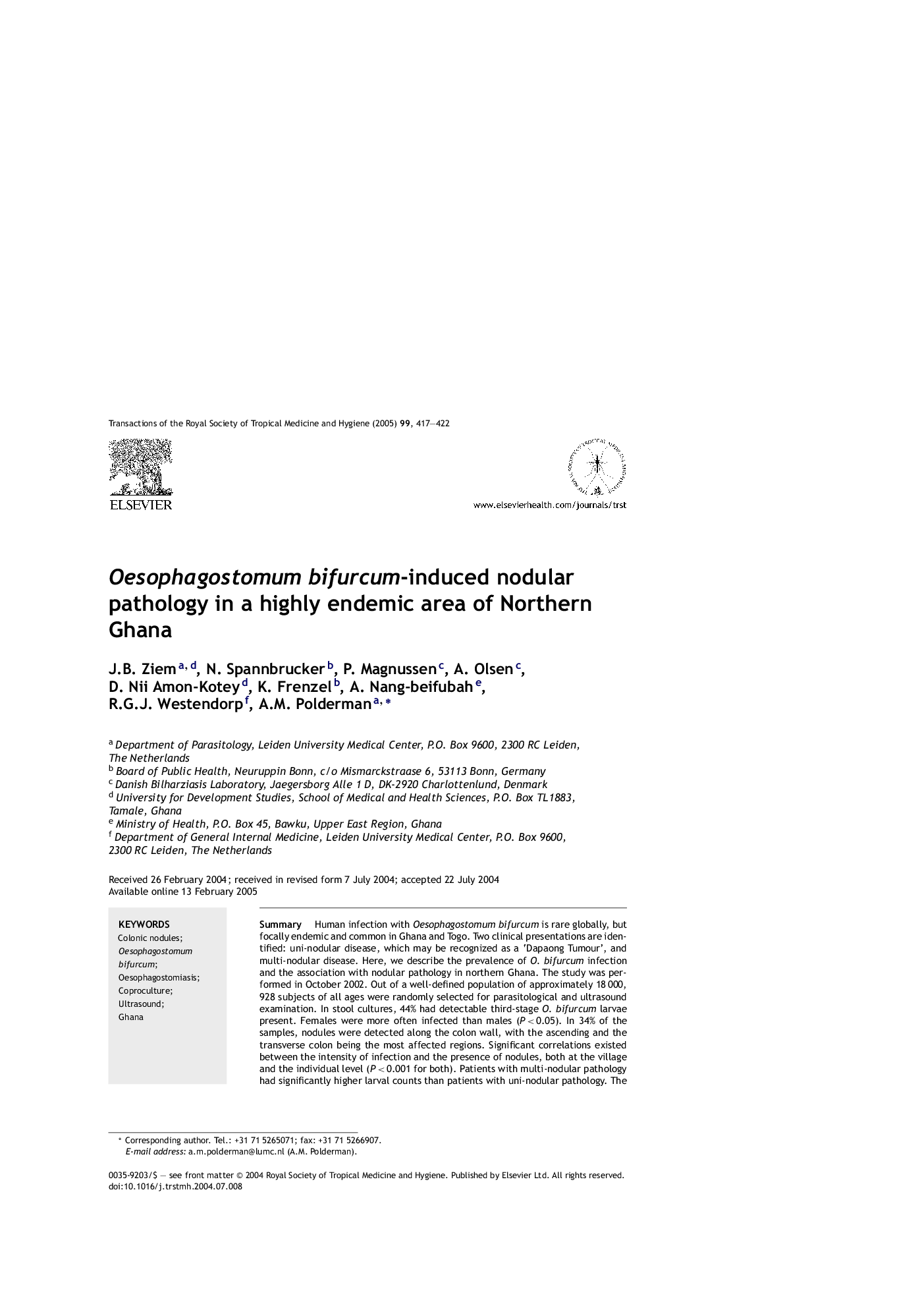| Article ID | Journal | Published Year | Pages | File Type |
|---|---|---|---|---|
| 10030571 | Transactions of the Royal Society of Tropical Medicine and Hygiene | 2005 | 6 Pages |
Abstract
Human infection with Oesophagostomum bifurcum is rare globally, but focally endemic and common in Ghana and Togo. Two clinical presentations are identified: uni-nodular disease, which may be recognized as a 'Dapaong Tumour', and multi-nodular disease. Here, we describe the prevalence of O. bifurcum infection and the association with nodular pathology in northern Ghana. The study was performed in October 2002. Out of a well-defined population of approximately 18Â 000, 928 subjects of all ages were randomly selected for parasitological and ultrasound examination. In stool cultures, 44% had detectable third-stage O. bifurcum larvae present. Females were more often infected than males (PÂ <Â 0.05). In 34% of the samples, nodules were detected along the colon wall, with the ascending and the transverse colon being the most affected regions. Significant correlations existed between the intensity of infection and the presence of nodules, both at the village and the individual level (PÂ <Â 0.001 for both). Patients with multi-nodular pathology had significantly higher larval counts than patients with uni-nodular pathology. The present data suggest that nodular pathology, and probably the severity of the disease, are directly related to intensity of the infection.
Related Topics
Life Sciences
Immunology and Microbiology
Applied Microbiology and Biotechnology
Authors
J.B. Ziem, N. Spannbrucker, P. Magnussen, A. Olsen, D. Nii Amon-Kotey, K. Frenzel, A. Nang-beifubah, R.G.J. Westendorp, A.M. Polderman,
